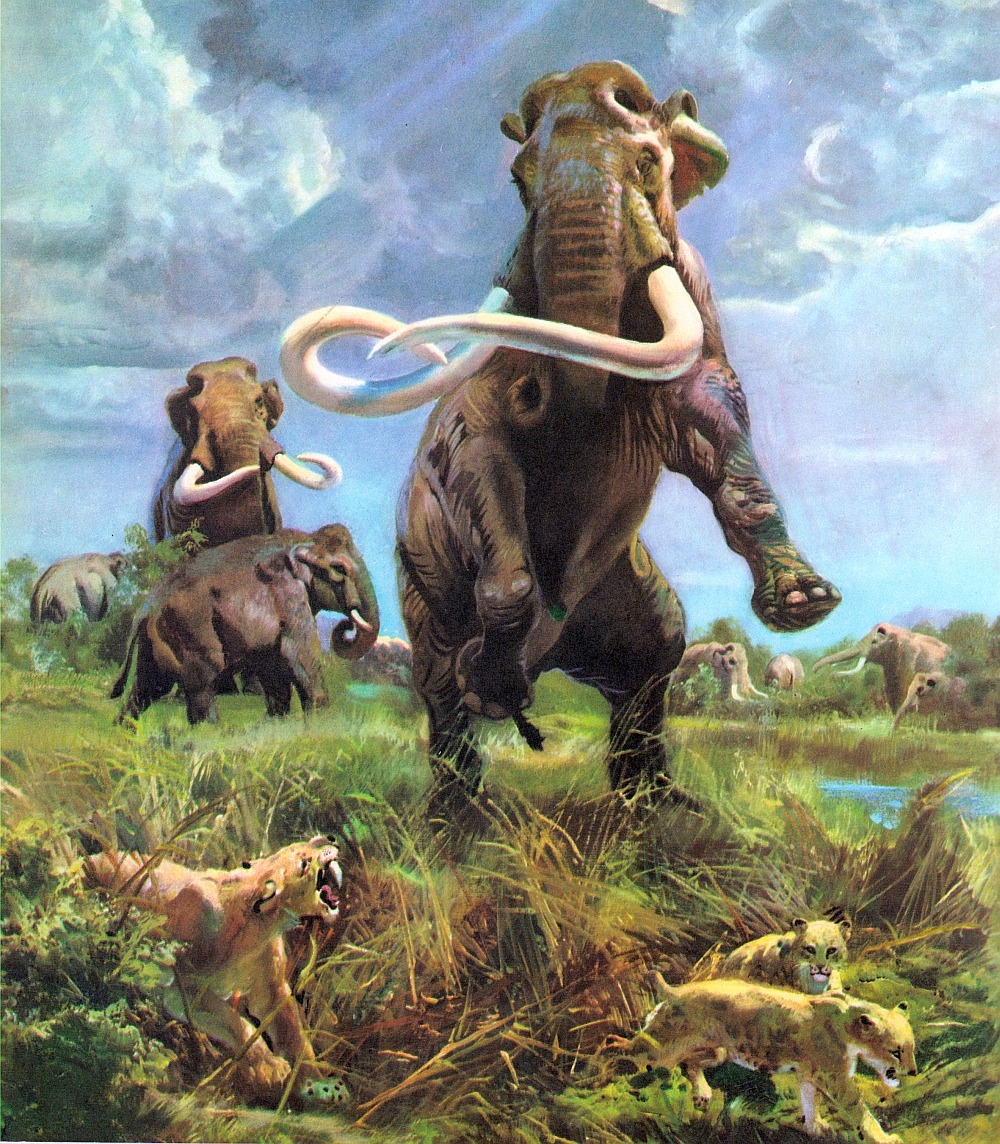 |
| Mammoths & Sabertooth Cats (Zdenek Burian) |
31 May 2013
The Mammoth Prairie
24 May 2013
Bellingham's Big Bird
 |
| DiatrymaUniversity of Wyoming Geological Museum |
The western half of the Northwest is, for the most part, a geologically young landscape, shaped by the still-growing Cascades and by sediments deposited during the Pleistocene. The fossils found here are, for the most part, correspondingly young. In the Puget Sound Lowlands and the Willamette Valley in particular the vertebrate fossil record is dominated by Ice Age mammals (including the Manis Mastodon). However, there are pockets of older rocks in the region, including the Oligo-Miocene formations of the outer coast that have yielded some of the world's most important specimens of marine mammals and the marine reptile-bearing Cretaceous rocks along the Strait of Georgia. Among the most unusual vertebrate fossils in the region are those from the Chuckanut Formation near Bellingham. In the Eocene, the area was a low-lying floodplain in a warm climate (as indicated by the palm fronds that have been found there). Bones of fossil vertebrates are rare in the formation, but many animals left their footprints in the then-soft sediments of the floodplain, several of which have been preserved as fossil trackways. Trackways and other trace fossils are invaluable paleoecological tools, as they preserve direct evidence of interactions between organisms and their environment. A recent publication out of Western Washington University describing a pair of giant bird tracks from the Chuckanut Formation is a nice case study of the use of fossil footprints in making inferences about the behavior of extinct animals. One of the Eocene's most charismatic animals was the giant flightless bird Diatryma (possibly the same animal as the European Gastornis of BBC fame). Diatryma bones are well-known from the Eocene beds of Wyoming, and when it was first discovered by Edward Drinker Cope in the late 19th Century, it was thought to be a carnivore and was frequently depicted as preying upon the small horses that were common in the area. However, it has subsequently been hypothesized that Diatryma was herbivorous, possibly using its large beak to crack nuts or fruit rinds. The Washington tracks have been tentatively assigned to Diatryma or a close relative; while assigning trace fossils to a taxon previously known from body fossils always entails some risk, but since no other large birds are known from the Eocene of North America, in this case the authors are not going out on too much of a limb. If the tracks were indeed made by Diatryma, they provide some hints as to the animal's behavior, as they don't seem to show any evidence of the sharp talons that characterize modern predatory birds (including, significantly, the terrestrial secretary bird). This is not, of course, the final word in the debate; it's entirely possible that if Diatryma were a predator, it relied more on its beak than its feet for hunting, and it's not outside of the realm of possibility that evidence of talons simply wasn't preserved in these tracks. However, the footprints do provide a novel viewpoint, and it is certainly to be hoped that the Chuckanut Formation will continue to produce fossils that will help elucidate the ecology of Eocene ecosystems.
Subscribe to:
Comments (Atom)